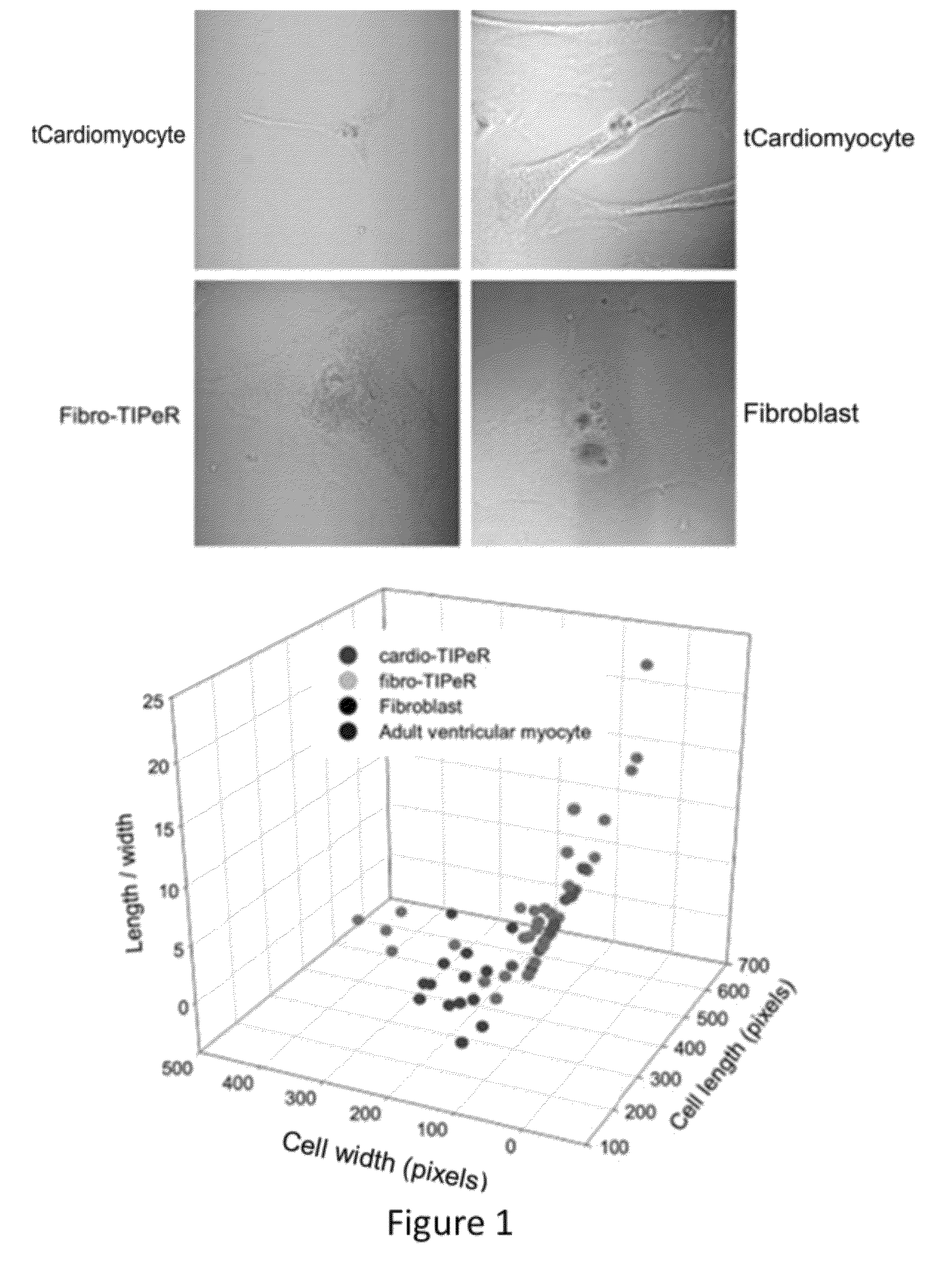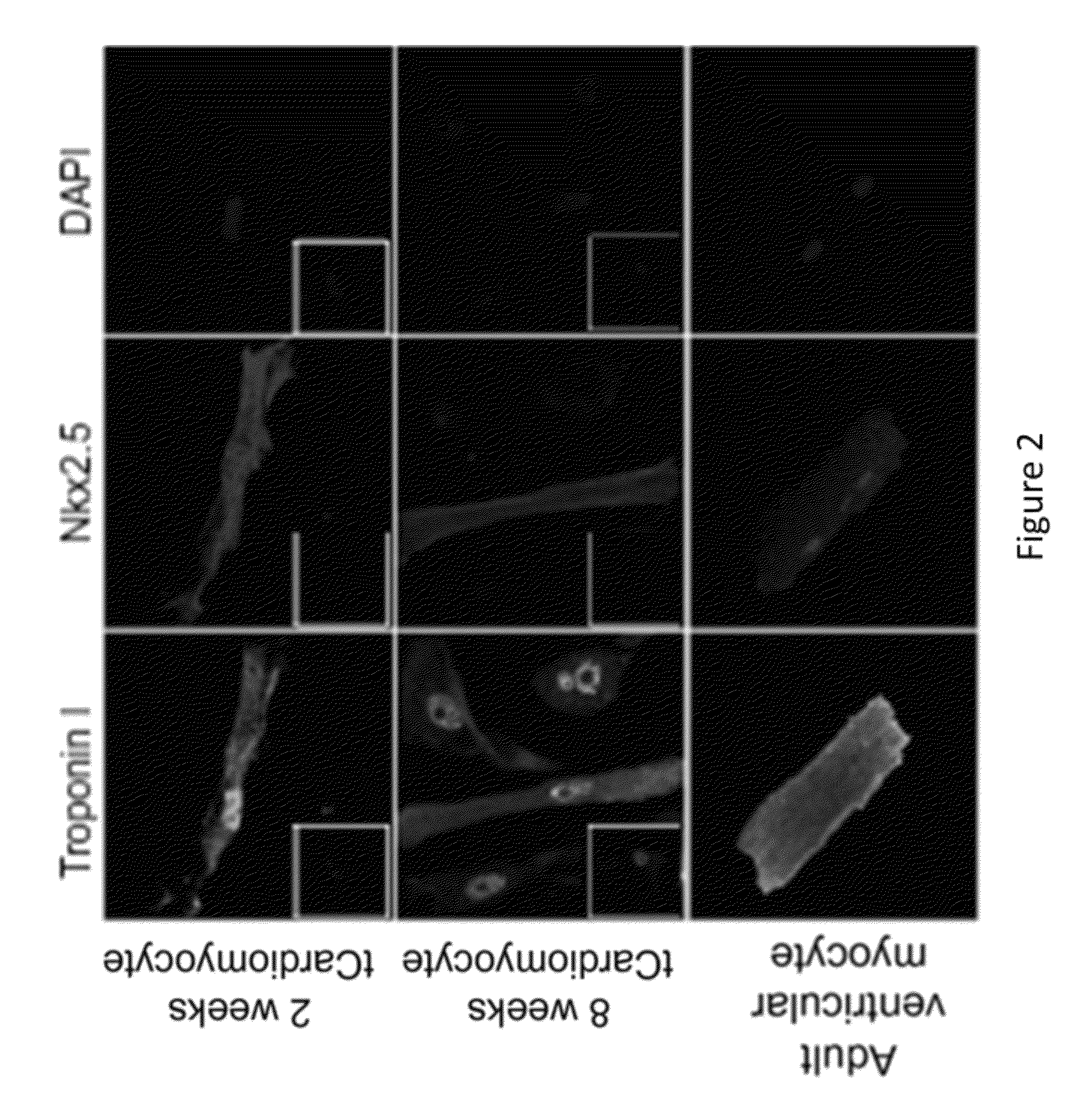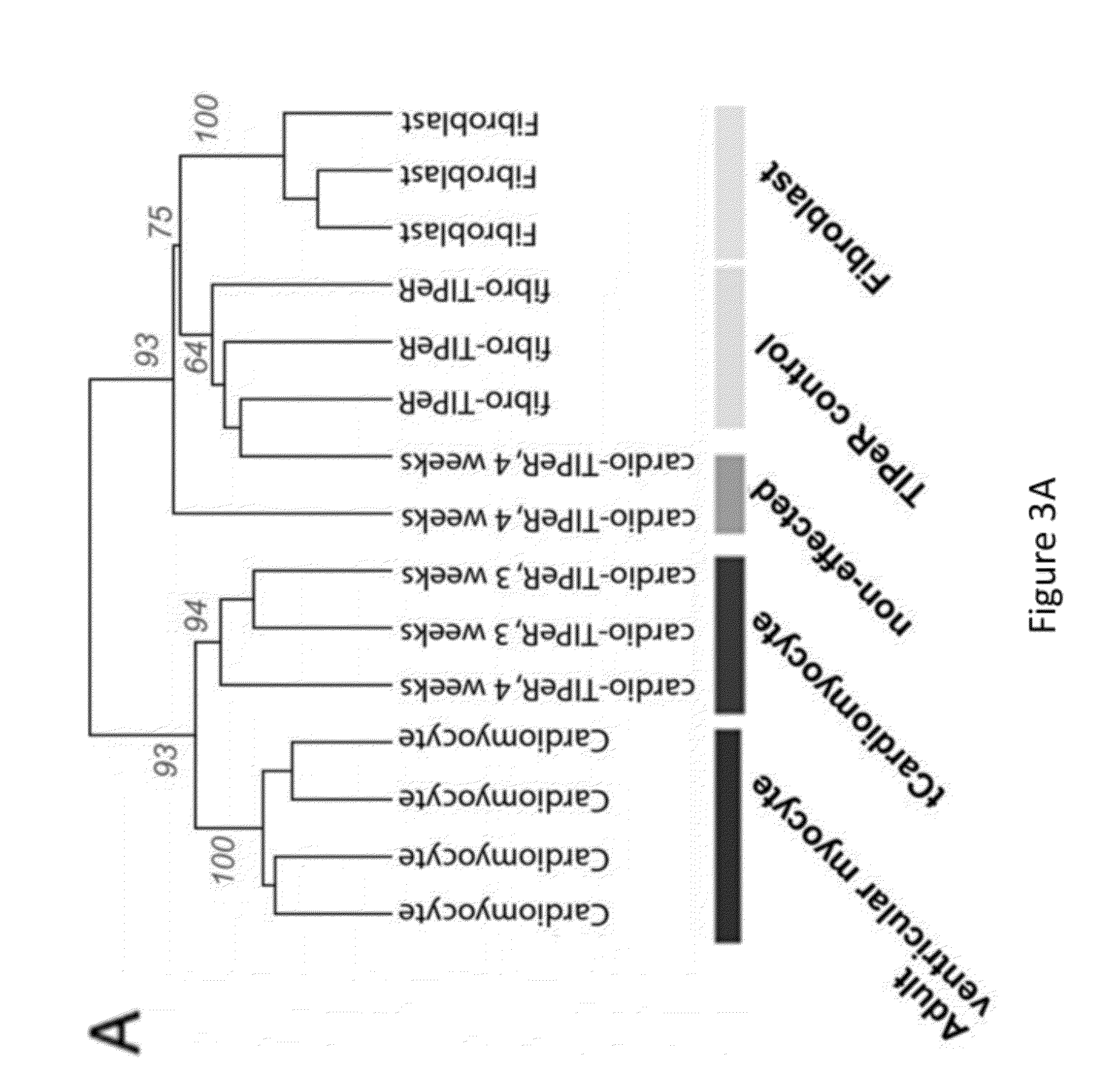Transcriptome transfer produces cellular phenotype conversion
a transcriptional transfer and cellular technology, applied in the direction of artificial cell constructs, genetic material ingredients, skeletal/connective tissue cells, etc., can solve the problem of adding a layer of complexity that is difficult to control
- Summary
- Abstract
- Description
- Claims
- Application Information
AI Technical Summary
Benefits of technology
Problems solved by technology
Method used
Image
Examples
example 1
Transdifferentiation of Fibroblast to tCardiomyocyte
[0125]Cardiomyocyte-like cells (“tCardiomyocytes”) were created from mouse primary embryonic fibroblasts using the following materials and methods.
[0126]Cell Culture and Poly-A+ RNA Transfection
[0127]Primary mouse embryonic fibroblast (PMEF-NL; Millipore) culture was incubated in DMEM supplemented with 10% FBS at 37° C. with 5% CO2. WT adult mouse (strain C57BL / 6, 7-9 wk old) ventricular myocytes were isolated from hearts mounted on a Langendorf apparatus and perfused with Ca2+-free Tyrode's solution with collagenase B and D plus protease. The ventricle was dissected, and sections of ventricle tissue were gently triturated to dissociate individual myocytes. Mouse cortical astrocytes were isolated from mouse embryos and cultured in DMEM supplemented with 10% PBS, AVM poly-A+ RNA was isolated using TRIzol and the Micro-FastTrack 2.0 Kit (Invitrogen), following the manufacturer's protocol. There were two transfection protocols. First,...
PUM
| Property | Measurement | Unit |
|---|---|---|
| diameter | aaaaa | aaaaa |
| exposure time | aaaaa | aaaaa |
| power | aaaaa | aaaaa |
Abstract
Description
Claims
Application Information
 Login to View More
Login to View More - R&D
- Intellectual Property
- Life Sciences
- Materials
- Tech Scout
- Unparalleled Data Quality
- Higher Quality Content
- 60% Fewer Hallucinations
Browse by: Latest US Patents, China's latest patents, Technical Efficacy Thesaurus, Application Domain, Technology Topic, Popular Technical Reports.
© 2025 PatSnap. All rights reserved.Legal|Privacy policy|Modern Slavery Act Transparency Statement|Sitemap|About US| Contact US: help@patsnap.com



